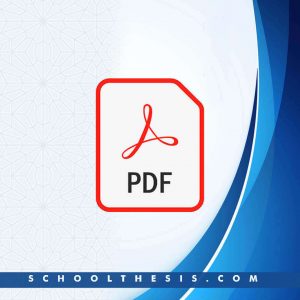
A Morphological Analysis of Loan Words Among Yoruba Speakers of English Language
Abstract of A Morphological Analysis of Loan Words Among Yoruba Speakers of English Language
The thesis entitled “A Morphological Analysis of Loan Words among Yoruba Speakers of English in Kaduna Metropolis” is a documentation and analysis of some English, Hausa and Arabic loan words in Yoruba language. The study is propelled by the following observations: that a large part of the vocabulary of the Yoruba Language are loan words from other languages particularly the English, Hausa and Arabic languages due to language contact in a heterogeneous society, that these loan words are basically as a result of the need for new designations and identity and that these loan words have been domesticated and are generally used by the Yoruba speakers according to their profession, religion and even their level of literacy in Kaduna metropolis. The work therefore, finds out the extent to which language contact through Urbanisation has influenced loaning of words and how some words have been integrated into the vocabulary of the speakers and hence give some forms of identity. The source of data for the research is primary source which involves the participant observation method and tape recording of utterance. The researcher discovered that there are very many English, Hausa and Arabic loan words in the Yoruba language and that in the course of integrating these loan words, they (the loan words) experienced adjustment in line with the morphophonemic rules of the Yoruba Language. This study will help to understand the learning problems of students of English Language, teach Yoruba speakers of English better and how the issue of inter language and hence inter lingual errors or even errors arising from interference can be tackled.
Chapter One of A Morphological Analysis of Loan Words Among Yoruba Speakers of English Language
INTRODUCTION
BACKGROUND TO THE STUDY
Many children born in Nigerian urban areas are exposed to two to more languages because of the heterogeneous nature of the cities/towns. One of such languages is the language of the environment; the other may be their mother tongue L1, English language which is the official language of the country and bits of Arabic language which is the language of Islam. That is if Islam is one of the predominant religions in the metropolis.
Kaduna metropolis used by the researcher as the scope is a cosmopolitan city and hence heterogeneous in nature. This influences language use among the speakers in the metropolis due to the contact of different languages. A child born in this environment is exposed to a minimum of two other languages aside his mother tongue. They include Hausa (language of the environment) and English language (official language of the nation and medium of instruction) and Arabic used for worship among the Muslim faithful.
Language contact occurs in a variety of phenomena which include language convergence, and re-lexification, other products include: pidgin, creoles, code-switching, code-mixing etc. Banjo, (1983), Madaki, (1983), Pariola (1983) in Olaoye (1991), also state that, when languages come into contact, a variety of phenomena take place which are bilingualism, borrowing, re-
lexification, code-switching, code-mixing and perhaps language death.

